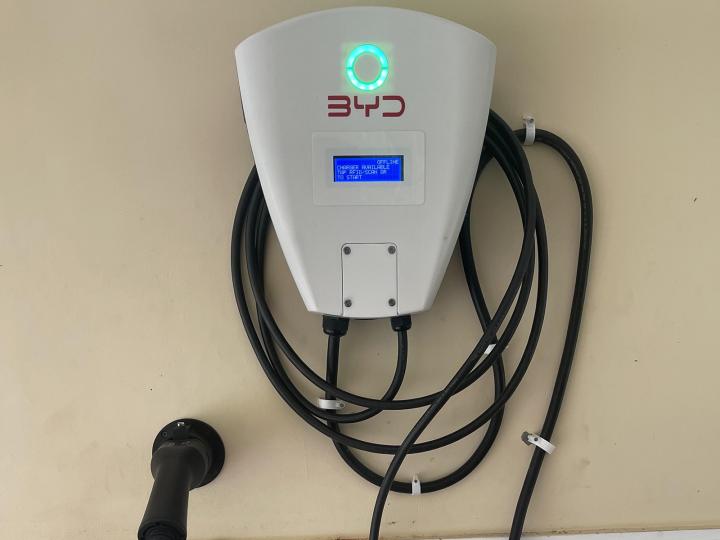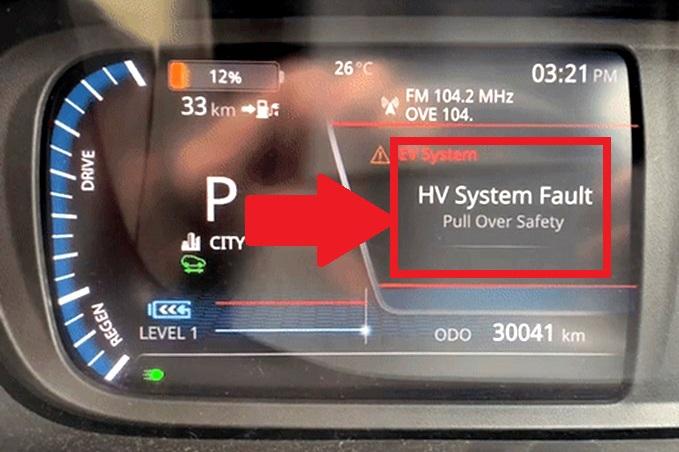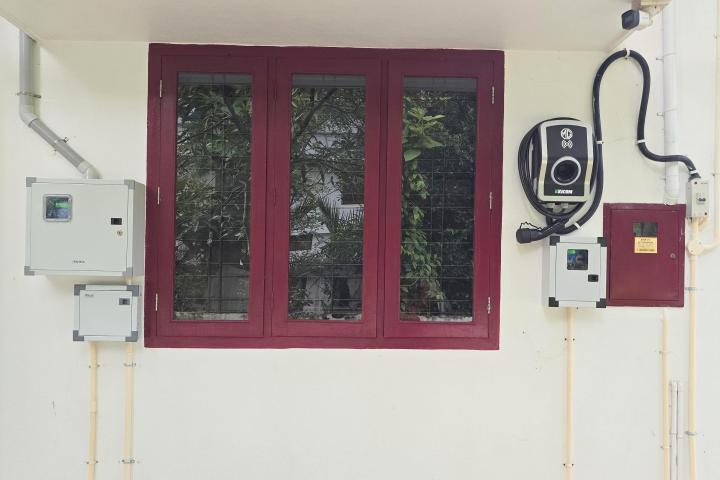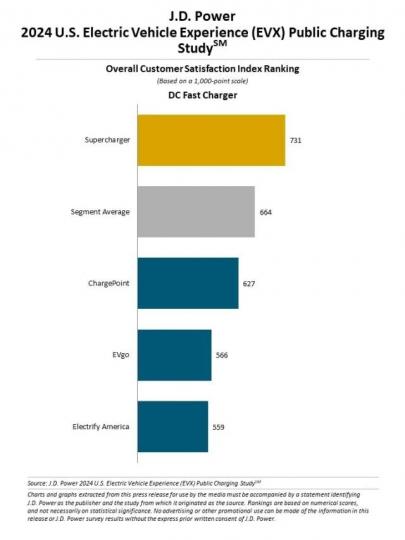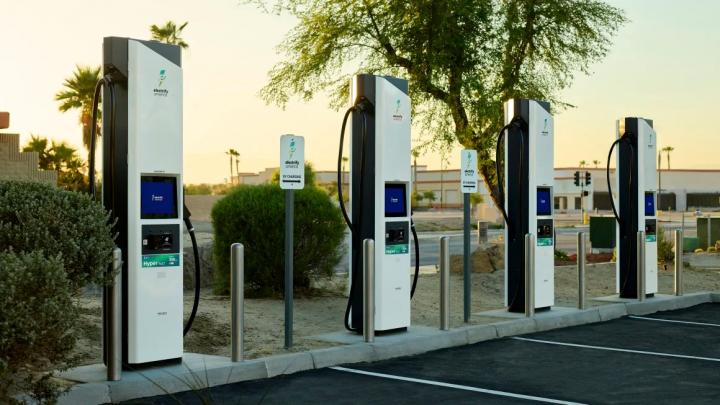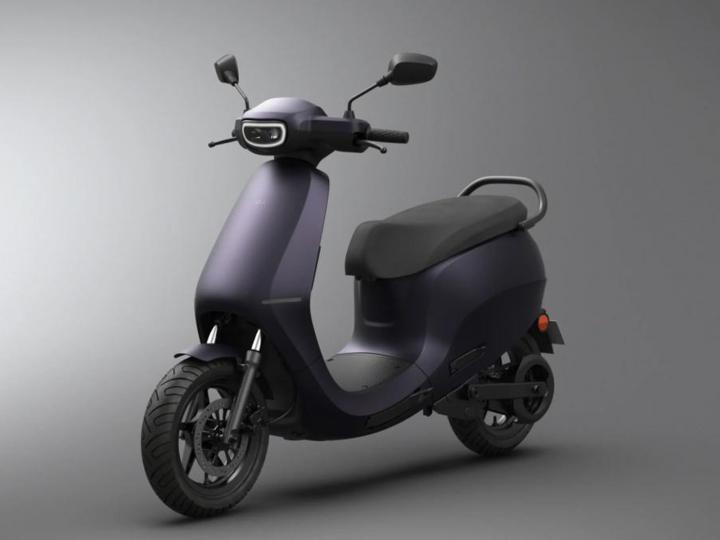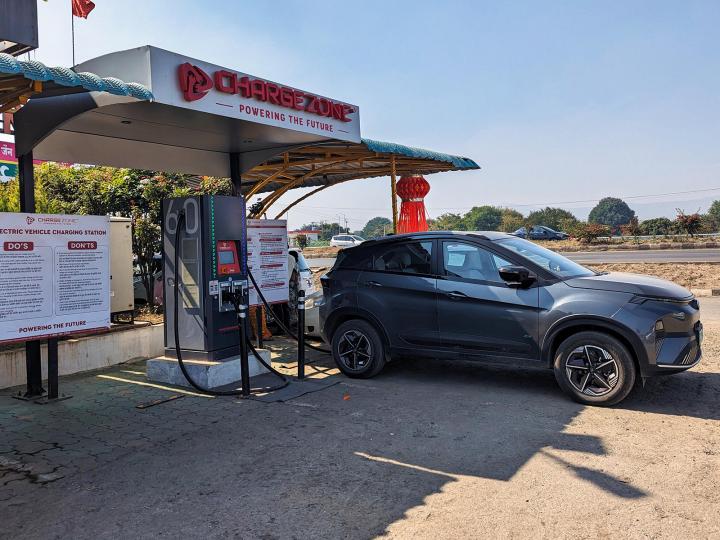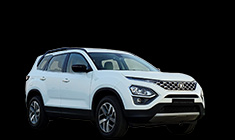News
Often drive my ZS EV on Bangalore Chennai route: My charging experience
I use different chargers depending on how fast I want to reach, what kind of food.
BHPian shyampsunder recently shared this with other enthusiasts:
I frequently drive from Bangalore to Coimbatore and Chennai, the charging infra has seen a ~5x growth in roughly 1.5 years since I have purchased the car. I am discounting BPCL and other government chargers because I don't consider them reliable enough to waste my time and money on them.
I am going to list out the chargers that I keep in my mind while doing this trip. I use different chargers depending on how fast I want to reach, what kind of food I want and whether I feel like taking a break. So will modify the template slightly and reduce some redundant info.
- Vehicle - MG ZS EV
- Battery Capacity - 50 KWh
- Range on Highway - 300 kms (driving between 90-100 kmph)
Bangalore - Coimbatore (NH44)
Charger Details:
- Charging Point Provider (CPO) - Zeon
- Charger Capacity - 50 kW & 24 kW
- Number of Guns - 2
- Charger Location - Hotel Surya Complex, - Location Link
- Amenities - This is one of the best highway rest stops that I have been to in India, It has a lounge to take a nap, children's play area, restrooms for guests as well as a full fledged hotel. I recommend this as stop for even ICE owners, never knew about this place in a decade of driving between these two cities.
- Restaurants: Plenty of options, all highly rated: Saravana Bhavan, McDonalds, KFC, Burger King and Baskin Robbins
It's only around 70 KMs from Bangalore and I reach this place with 75%+ in SoC so it's not an optimal stop but if we are hungry, we simply plugin to the 24 kW charger and have our meal. The car is usually at 100% much before we are done with our meal.

Bangalore - Coimbatore (NH44)
Charger Details:
- Charging Point Provider (CPO) - Zeon
- Charger Capacity - 50 kW
- Number of Guns - 1
- Charger Location - Aasai Aasai Anandha Bhavan, Omalur - Location Link
- Amenities - Good restaurant and clean restrooms. This place also has a bus charging facility.
It's around 200 KMs from Bangalore and I reach this place with 40% in SoC. We usually take 35-40 mins to complete our meal and the car is at 90%+ which is generally enough to reach Coimbatore without further stops.
Bangalore - Coimbatore (NH44)
Charger Details:
- Charging Point Provider (CPO) - Tata Power
- Charger Capacity - 25 kW
- Number of Guns - 1
- Charger Location - True Sai Motors, Salem - Location Link
- Amenities - Tata Motors dealership located next to Hotel Grand Estancia
Now this is a slow 25 kW charger which is very rarely used by folks but it's something I have used multiple times and that is because of the presence of Hotel Grand Estancia next door which offers great hygienic food, super clean restrooms. I use this only on relaxed drives where we are in no rush. Charger also supports booking so there is no worries about arriving to a blocked charger. We only charge till we are having our meal which usually takes 45 minutes and we leave even if we don't have sufficient charge to make it to Coimbatore because there are plenty of chargers on the way to do a quick 10 minute top up. Also best to use the Tata Power RFID to start charging on this one.
Bangalore - Coimbatore (NH44)
Charger Details:
- Charging Point Provider (CPO) - Zeon
- Charger Capacity - 50 kW & 60 kW
- Number of Guns - 3
- Charger Location - Saravana Bhavan, Sankari - Location Link
- Amenities - Good restaurant + hotel for lodging.
This is a default spot to charge for many EVs traveling on this route. With 3 guns, the probability of being stuck waiting for others to finish charging is low.

Bangalore - Coimbatore (NH44)
Charger Details:
- Charging Point Provider (CPO) - Zeon
- Charger Capacity - 120 kW & 60 kW
- Number of Guns - 4
- Charger Location - Texvalley Mall - Location Link
- Amenities - Pretty cool charging setup with McDonald's nearby
If I need a 10 minute top up I either stop here or at Jio-BP.

There are plenty of other options on this route as well with significant number of chargers near Avinashi if you are running low on charge.
In my opinion, this is one of the best highways in the country to drive an EV on.
Check out BHPian comments for more insights and information.
News
BYD Atto 3 home charger: Details & installation experience
One has to just switch on the MCB and connect the charger to the vehicle, and it automatically starts charging. A RFID card was supplied, but at present there is no use for it.
BHPian themonster recently shared this with other enthusiasts:
Hello Everyone!
Updating the thread, the Relux team had come and installed the 7 kW charger yesterday. I was not present at home during the time of installation and since we had discussed regarding the placement of the charger, they had come and installed it off. As with other brands, the EV charger was supplied with 10 meters of 10 sq mm 3 core copper cable.
Attaching an image of the final look. I might not continue using the gun holder on the wall in the future, only time will tell.

And also regarding the various colours the ring has and the specifications of the charger.

One has to just switch on the MCB and connect the charger to the vehicle, and it automatically starts charging. A RFID card was supplied (It looks similar to the ones you get at hotels, a plain white card without any branding or design), but at present there is no use for it. One can speculate the device also has WiFi capabilities and can be used with the BYD app, but I have no information regarding this as of now.
The messages on the device at the time of charging.


And the information displayed on the driver console screen.

It looks like the charger is charging at 6.38 kW, while the car is receiving 5.7 kW. I am not sure whether this is how it is supposed to charge, other EV owners can comment. On other forums, they have mentioned that usually they get similar findings.
Also, the emergency stop button is located on the top left hand side of the charger under a plexi-glass cover. Once you hit it, you would have to twist it clockwise to release it, otherwise the emergency stop stays engaged.
I must add that in my house, the distance from the main meter box (not the service pole) to my house is around 100 meters and that we have pulled a 10 sq mm 4 core copper cable for this distance and put an 4 pole isolator and grounded the same. I will share details in the relevant thread. I missed reading the forum properly and came to know at a later date, after the laying of the cable that a 16 sq mm cable would have been better in my use case.
Also, in my earlier post, I had missed adding photos of the portable charger (I am not 100% sure whether I should be calling it a 3 kW charger). Also adding a pdf of the manual of the portable charger.
The entire setup.

The head of the gun.

Literature on the back of the charger.

Quote from BHPian rkgi10:
@themonster Congratulations on the new ride.
Is sun film legal in India? Any particular thing to keep in mind while installing?
Hi rkgi10,
Thank you.
I might be going a little off-topic in answering your query.
So, I am currently based in Kerala, and recently the Kerala High Court has allowed the use of sun films upto a certain limit, i.e. 70% visibility for the front and rear windshields and 50% visibility for the side windows.
Here is the link for the discussion of the same topic. Link
There are plenty of threads, posts and discussions on the forum regarding the legality of sun film use in India. Posting a linkto the same.
There are other threads where people have put better sun films on their cars. Link1& Link2
If one does not prefer sun films, there is a thread on legal alternatives to sun film. Link
Personally, I do not like sun films to be very frank, especially the dark ones, where the VLT < 50%. I drive around a lot and many a times I am unable to find a shaded parking for my car. Over time this has taken a toll on the interior and the leather upholstery in my previous car. The above reason and the energy required for the battery in the EV made me go forward with sun film with this car.
Regarding the legality, its a grey area. Most of the times, if your sun film does not obstruct vision it is alright, but again it depends on the constable who catches you and the time of year. My previous car, a Honda City has sun film with 20% VLT installed only on the side windows and the rear windshield and I have travelled most of South India with it. I was only stopped earlier when I had the removable mesh sunshades, and of course for document/election duty checking. Nowadays, most police officers have a transmission of light checker to check the visibility; I have seen those in use in Bangalore City, and I have heard that in Kerala they are planning to supply the same device to the police here.
I hope the information helps.
Quote from BHPian linuxworld:
And can @themonster confirm the associated cost for installing sunfilms in Atto3?
I got a good rate for installing the sun films, total cost of films and installation were within Rs. 20K. I shall DM you the final amount I paid.
The MRP for Garware Artic Cool Shield is about Rs. 7800/- per roll and the Atto 3 used about 3 rolls of sun film for the front and rear windshields and the side windows. They used architectural window film for the moonroof glass, which was quite dark, VLT maybe 30% or less.
Download IC-CPD Manual(MM) (1).pdf
Check out BHPian comments for more insights and information.
News
Short trip to Lonavala in my Tata Nexon EV: Range anxiety alleviated
I am now a bit more confident about taking Nexon EV for short drives outside Mumbai city. However, I still need to experience the entire process of fast charging the car.
BHPian Saanil recently shared this with other enthusiasts:
Short trip from Mumbai to Lonavala:
We own a Nexon EV 3.0 (MR version) since Dec-23 and have driven it for around 13k kms so far. We have been using the car within Mumbai city only. Last weekend, we got an opportunity to drive it outside Mumbai. Our destination was Fazlani Wellness resort (near Lonavala) which is around 130kms from our home in Goregaon. I was traveling with my wife and my 3 year old son.
I was anxious about taking our Nexon EV as I did not want my family to have any sort of bad experience due to my naivety in terms of planning charging stations etc. But then Lonavala is probably one of the easiest destination to plan due to its close proximity to Mumbai and relatively abundant public charging stations. I was further comforted by the fact that the resort had a slow charging facility so I never needed to worry about fast charging my car mid-way. The resort had 4-5 electric buggies which are used to ferry guests around the resort and they told me that I could use one of the 15A socket in their parking area to charge my car. I was charged Rs 500 (+ GST) for availing this service.
Home to Fazlani Resort:
Started from Goregaon at 9.30am with 100% charge. Covered a distance of 134kms over 3 hours and 46 minutes which included two toilet breaks in between. I reached the resort with 41% charge. So in effect, I consumed 59% battery for 134kms implying efficiency of 2.3kms per 1%. This included a short uphill drive during which the AC was shut off. I did not cross 80km/h speed during the entire journey.


Fazlani Resort to Home:
Started with 100% battery and reached home with 60% charge left with travel time of 3 hours and 32 minutes (incl. just one toilet break). So I consumed 40% battery for 135kms giving efficiency of 3.4km per 1%. I will highlight that AC was not used for around 30% of the journey. You will see in the chart below that regen helped in increasing the battery charge from 87% to 90% when going downhill (used Level 1 regen only).
Takeaway: I am now a bit more confident about taking Nexon EV for short drives outside Mumbai city. However, I still need to experience the entire process of fast charging the car.


Check out BHPian comments for more insights and information.
News
BYD Atto 3 charging port fried while charging
It was evident that the electric vehicle's safety systems, such as the fuse or relay, failed to function correctly. I had to shut down the charging station by pressing the Emergency Stop Device (ESD) button.
Thanks to Thwalhath Abdul Rasheed for sending this information in. Heartfelt gratitude for sharing it with other enthusiasts via this Team-BHP share page!
I am writing to formally lodge a complaint and express my deep concern regarding a critical safety incident involving my BYD Atto 3. The incident occurred on July 25, 2024, in Madurai, Tamil Nadu while the vehicle was charging at a DC charging station. To my utmost shock and dismay, the car caught fire during the charging process.
Upon investigation, it was evident that the car's safety systems, such as the fuse or relay, failed to function correctly, resulting in the car catching fire. Alarmingly, the current flow was not interrupted during the incident. I had to personally shut down the charging station by pressing the Emergency Stop Device (ESD) button to prevent further damage.
I immediately reported the incident to BYD India and EVM Autokraft, Kochi. However, I was met with a disappointing response, as both parties denied the warranty for a month-old car.
As a professional working in the energy field with a solid understanding of electricity, I can confidently state that the arguments presented by EVM Autokraft, Kochi and BYD India lack merit. The denial of warranty under these conditions is both unjustifiable and indicative of poor business practices.
I urge BYD to take immediate action to address this matter by:
- Conducting a thorough investigation into the safety system failure of my vehicle.
- Providing a detailed explanation for the failure and the steps that will be taken to replace the car.
- Honouring the warranty and covering all damages and losses incurred due to this incident.
- Ensuring that such incidents are prevented in the future through improved safety measures and rigorous quality control.

Here's what BHPian Guna had to say about the matter:
Forget about the warranty, I am surprised that they didn't pick up the car immediately and provided a spare car until the investigation is over. For a brand who is trying to establish in India, they should take these seriously for their own benefit and should look at it as an isolated incident.
Here's what BHPian CentreOfGravity had to say about the matter:
This is quite serious. While EV fires aren't a new thing, this is the first time I've heard of a car catching fire while charging. BYD better run a thorough investigation of this incident and come up with a proper, believable report. If it's their mistake, they ought to own it up instead of playing the blame game. However, the possibility of this being caused due to a defect at the charging station cannot be completely ruled out either, can it?
I must also add, this appears to be a one-off incident. Thankfully nothing major has happened.
Here's what BHPian Turbanator had to say about the matter:
I don't understand how the charging gun is loose and the current continues to pass. There has to be a mechanism which ensures that the charge is passed only when the gun is inserted properly. It's not as if someone can plug any appliance and there can be looseness for whatever reasons. Or the quality of the plugs in the gun or the car can be the reason.
This kind of incident will go bad against this manufacturer more so when they are refusing a warranty. A very foolish step by the manufacturer/ dealer if true. Will be interesting to hear what does dealer or the company has to say- they will need to answer on the refusal of the claim.
Check out BHPian comments for more insights and information.
News
Stuck on a remote highway in Tata Nexon EV Max due to charging issues
Not something I was looking forward to after paying so much for an electric vehicle. Response from Tata Motors is also very unwelcoming when there is also a lady on board.
BHPian sumannandy recently shared this with other enthusiasts.
We are travelling in Tata Nexon EV Max from Bangalore to Leh via Kashmir. The car has done about 65,000 kms with a recent battery change. And I use the car mostly on highways. 65,000 is covered in one and a half years.
However today after I left Jammu with a 100 percent charge, we tried to charge in BPCL en route. Charging stopped showing under voltage error and the car went into HV critical error mode. Now with ladies accompanying us, we have been stuck in a remote highway since morning.
Tata RSA initially arranged a tow truck which would come after 4 hours. And they didn't say anything about taxis. The tow truck guy called and said passengers could not travel in the truck. Now Tata RSA is asking us to arrange a taxi on our own, and they will look after reimbursing. Point is there is no taxi available, but they could have easily arranged a taxi from the nearest city Jammu. Now they are not doing it but asking us to arrange on our own.
Even the girl who called had no idea about the Nexon EV Max and was asking irrelevant questions and even said my car could not be towed.
Not something I was looking forward to after paying so much for a car. It is now a safety issue as well. Response from Tata Motors is also very unwelcoming when there is also a lady on board.
Here's what BHPian RollinWheels had to say about the matter:
My anxiety peaked just by reading this. This is why I think I will never get adjusted to an EV with the current infra we have in this country. At least, not yet.
Hope you get to the nearest town safely.
Here's what BHPian Shreyans_Jain had to say about the matter:
You are going cross country, across mountains, in a Nexon EV. Surely, you are not doing this in the spur of the moment. You must have done plenty of homework beforehand and anticipated such things. Everyone knows that charging infra is really spotty and unreliable in the mountains. Again, it is well known that repeated back-to-back DC charging sessions can lead to the HV error, you should do a slow charge to 100% every once in a while. There are multiple videos online about people attempting the Ladakh circuit in EVs and all of them have struggled big time. I salute your bravery and risk appetite for attempting such a drive, especially with family. But such a thing was bound to happen at some point. RSA can’t be expected to be a get-out-of-jail card when you are out in the middle of nowhere. This one is on you, brother!
It’s like, you can’t blame Honda if your City gets stuck or damaged if you take it off-roading.
Here's what BHPian MT_Hyderabad had to say about the matter:
He has done 65,000 kms on the same car, that too mostly on highways. I am sure he knew what he was doing. However, the point is related to RSA. I have very bad experience with Tata RSA, it appears that the lady on his call was the same lady I was dealing with when my Safari Dicor had some electrical issues. I wanted a pickup truck and she was arranging it from 100 kms away when I was just 35 kms away from the city centre (Hyderabad). That also never came. They did call after 6, 7 hours to check if I was still waiting for them.
It was raining, I took help from my friends to arrange a mechanic, who fixed it temporarily. Later, I got it rectified permanently.
Here's what BHPian Rehaan had to say about the matter
This is the case of:
- The Tata EVs' notorious "HV Critical Alert", and the awful frequency at which it's been happening, and Tata's inability to let users rectify it without a service visit (despite it being a frequently faced issue).
- Poor & terribly slow response from the RSA. And not because OP was in some remote area either - as he's mentioned the expected time vs the actual times in his post above.
Some HV error related threads:
- Tata Nexon EV Max shows HV System Fault even before battery reaches 9%
- HV Critical Alert in Tata EVs
- HV Battery Fault at 10 months in my Nexon EV Max | Tata’s quick response
- Tata Tiago Electric Review
I guess that said, you could argue that the OP should have known that this would be an eventuality (perhaps something like taking a Skoda DQ200 to Leh), but then again, that's where the RSA complaint comes in. (Though the arranging a taxi point needs to be checked in the fine print).
Also OP, just FYI, here's a report of a MG ZS EV having an HV error, however, the car seemed to be driveable and the problem disappeared after a few restarts!
Check out BHPian comments for more insights and information.
News
Upgrading our home EV charging infrastructure for 2 electric vehicles
I already have an MG ZS EV and have now booked the BYD Atto 3 as my wife's Maruti Ignis will be out of commission for a while due to an unfortunate incident of waterlogging.
BHPian sushanthys recently shared this with other enthusiasts.
Hi guys,
It’s been one and a half years since I bought my MG ZS EV. I had previously explained in detail about setting up EV charging infrastructure at your home. I will be continuing on that topic, in this article.
Ever since our MG ZS EV came home, our electricity bill has increased exponentially. Our consumption comes to 1000 – 1200 units per billing cycle, of which the car uses around 600-800 units (Our EV has consistently averaged around 2500 km/ month of driving). The electricity bill comes to around Rs.10,000 – 12,000, every 2 months. This is still way less than what it would cost to run an ICE car (Our Ignis needs around Rs. 10,000 worth of petrol, every month). So, while I was not too worried about the hefty electricity bills (it was more or less expected), I was always looking for options to reduce the expense.
Installing a solar plant is a good way to bring down your electricity bill. We finally got it done, this June. Our house being a bit on the older side, had enough rooftop space only for a 5Kw plant. This solar plant will generate around 20 Units/day, depending on the climate (less during monsoons & more during summers). That would mean a generation of approximately 600 units/month, which would completely cover the electricity expenses of our house & bring down the rest of the electricity bill to manageable limits (As you all know, the more units you consume, you go to a higher slab of consumption and the tariff per unit increases. As I am consuming more than 1000 units every billing cycle, I am currently being charged at Rs.8/unit).
The solar plant was commissioned by a VGuard dealer, near our home. While I was discussing the details with him, he mentioned that the Kerala State Electricity Board (KSEB) had recently started providing domestic connections, solely for EV charging. The consumer will be charged at a flat rate of Rs.5.50/unit, regardless of the number of units used. This was a central government scheme, run by POWERGRID Corporation. He also mentioned that the scheme was not being advertised as of now and I will have to check with the KSEB office for details.
This was an interesting bit of information. I looked up the internet but could not find anything. I called up the KSEB Overseer whom I knew and asked him about the details. He confirmed what the dealer told me. The application process was the same as that of obtaining a new connection. I went to the KSEB Office, purchased a form for Rs.10 and went home. I wasn’t planning on applying immediately. The solar work was going on and I thought I would revert to this, once the plant was commissioned and after checking how the resultant electricity expenses came down to. But then, something happened.
At the end of June, my wife's car, a Suzuki Ignis, had to be sent to the workshop due to an unfortunate incident of waterlogging. The Ignis had clocked 90,000+ kms but was running well. We had been thinking about a new car to replace the Ignis but the planning had not reached the active stage yet. Both of our cars do a lot of running and 2 cars were a necessity at our home. Since the Ignis would be out of commission for at least a month, we needed a new car all of a sudden.
The next one week was spent in a whirlwind phase of test-driving. We drove literally every car under Rs.25 lakhs. And every car felt sluggish & underpowered (The only car which we both agreed to be even worth considering was the Maruti Fronx). After driving an EV, my wife simply could not accept going back to an ICE car. I had to agree (We test drove the top-spec Hyundai Creta Turbo Petrol DCT, Suzuki Grand Vitara and Honda Elevate but none of them were a match for our MG ZS EV).
We went to the Tata showroom to test drive the Nexon EV, but it was not available. The salesperson promised to call when the test drive car became ready, but he never called us back (We had checked with them 2 months back regarding the Punch EV test drive and they never got back to us then, either). Tata should improve their dealership experience (This was in direct contrast to Toyota when we went to check the Taisor. They did not have the car but kept in contact every day till the test drive car became available).
Somehow, Mahindra was not considered. MG ZS EV was readily available but we wanted to try another EV. It was at this time that BYD announced the facelift of Atto3. The Premium Variant fit all our needs and the price had come down by around 4.5 lakhs (ADAS Features were not available, at this price point but we were OK with that). We contacted BYD and they came from Kochi with their test drive car. We both drove it. We both liked it. Booked the car. For an EV, the range is important and so we went for the Premium variant with the 60 kW battery.
So suddenly, we were going to have a 2 EV garage. And since both EVs would be with us for the next few years, that meant their charging needs required a long-term solution. The solar panels were up & running by then. I felt the KSEB connection for dedicated EV charging would be a worthwhile long-term investment. Decided to proceed with it.
On checking with KSEB, they asked me to install all the necessary equipment and then apply for the connection. Our electrician took some time to come but as usual, did a very good job. The cost of the equipment and his services came to approximately Rs.15k.
The things specifically needed were:
- 3 phase connection
- Service wire – 16 Sq mm Aluminium (If you use the usual 10 Sq mm Copper cable, there is a risk of fire while using the 7.2 Kw charger)
- HRC 63A fuses (Avoid the 32A Porcelain fuses, again due to risk of fire)
- 10 Sq mm Copper wires to connect the Fuses to the Energy Meter
- Adequate earthing (10 Sq mm Copper Earthing Cable)
These upgrades were required in view of the 7.2 Kw AC Fast charger. Since there would be 2 EVs in our garage, a 7.2 Kw charger makes sense (Our house already had it). If you are not planning to install the Fast charger, items 2 & 3 are not necessary. But if you do it the proper way, you are future-proofing your charging infrastructure and can avoid hassles later on.
After completing the installation, my electrician gave me the necessary paperwork. (He was also preparing the documents for an EV Charging connection for the first time). I submitted it at the KSEB office and paid a fee of Rs.60. I got an SMS saying that the inspection would be completed within one week.
Nothing happened in the next week. Followed it up with the office. They finally did an inspection after 9 days. After another 4 days, they sanctioned the connection. The connected load was 8.5 kw (It included the 7.2 Kw AC Fast Charger and the 16A charging plug).

I paid a total amount of Rs.14,478 at the office (Cash. Still no POS machine/UPI facility). The KSEB Officials came after 6 days and completed the installation process.




Post installation, I got an SMS saying that my connection process is complete. My connection was categorised as LT – 10 (the usual 3-phase domestic connection is LT-1/three). I searched ‘LT – 10’ online and finally managed to get the details regarding domestic connection for EV Charging, which I have given below.

So, that’s it about the upgradation of charging infrastructure at my home. This is how it is going to stay unless I upgrade the AC fast charger to a higher spec. I may link this new connection to the existing solar grid in future but that may take a while.
I spent nearly 30k in upgrading my charging equipment. There will be those who will be wondering if this was actually necessary. After all, the solar grid would actually reduce my electricity bills, without the need to go through this whole rigmarole.
I would like to explain the reasons why I felt this was a good option.
First
During this summer, electricity consumption was at a record high. It got to the point where KSEB actually issued a public statement asking EV owners not to charge their cars at home at night. It was not enforced but in subsequent summers, the situation may change.
I pointed out before that we were interested in the Maruti Fronx. When I told the NEXA guys that we would be going for a BYD, the senior executive was not exactly happy. He wanted to discourage me by talking about range anxiety and other EV shortcomings. He also claimed that charging EVs at night causes grid issues & affects the electricity supply to the public. I understood that he was disappointed but it was news to me that people had a negative view about EV charging and its effect on voltage & supply grid issues and blamed it for power outages. I knew it was nonsense but Public Perception is a different thing. People have no issues operating multiple ACs at home during peak load hours but frown upon EV charging at night.
When you take a domestic connection for EV charging, none of these things matter. If anybody objects, we can always say that a dedicated connection has been taken for a very specific purpose. Peace of mind is important!
Second
In the past one year, KSEB has started applying different tariff rates for different times during the day. During peak load times (6PM to 11PM), they have raised the rates for customers whose usage exceeds a certain limit (250 units) every billing cycle (or per month, not sure). The month before our solar plant was installed, the meter reader person said that our electricity meter would have to be changed to a TOD (Time of Day) meter, due to increased consumption at night. TOD Meters divide the day into various slots and charge higher rates at peak load periods & low tariff rates at other times. Since EV owners cannot avoid overnight charging, their electricity bills will go up even more.
When you take the LT-10 connection, this issue is not there as it is a flat tariff (Rs.5.50/unit), regardless of your usage at whatever time of the day.
Third
So far, the government has been supportive of EVs with reduced Road Tax and other freebies. But as the number of EVs goes up exponentially and the Electricity Grid starts feeling the pinch, the situation may change. As of now, no curbs have been imposed on home EV charging. But just like EV manufacturers have started charging hefty sums for Charging cables & AC Fast Chargers (they used to come free with the car), things will be different in future. EV owners may be compulsorily asked to install solar plants or take dedicated EV charging connections (May be conjecture on my part but it doesn’t sound too far-fetched). We will have to wait & see.
Fourth
Regarding the extra cost of the new connection, this is a one-time expense. I will not have to spend anything extra for maintenance. If my calculation is right, even with 2 EVs, my electricity bill should be around 1000 -2000 rupees less than the present billing cycle. If you have only one EV, the savings will be even more. I should break even within 2 years and after that, the savings will keep on adding up. So, it is a win-win situation, whichever way I look at it.
Fifth
It is high time we did our bit for Mother Earth. I cannot control the source of electricity which I use, but I surely have control over reducing my Carbon emissions. With 2 EVs, I am doing my part in helping the environment. It may not be much, but it is something.
Disadvantages
- Cost. 30k is not a small amount.
- The hassle of running around for the connection. The electricity department was in no hurry whatsoever to take the necessary steps.
- Our house was built at a time when solar energy was a novelty and the concept of EV/EV Charging was unheard of. There was no provision for adding all the extra equipment as such. Thankfully, we had just enough space to accommodate everything, without it being an eyesore. It will not be possible for everyone. It may or may not be an issue for Apartment owners who want to take an individual LT-10 connection for their EVs.
- We installed our solar plant under the subsidy scheme (Rs.78,000 will be refunded once all the formalities are over). This subsidy is only applicable to domestic connections. If you are planning to install a solar plant for the LT-10 connection, you will have to opt for a non-subsidy scheme. However, you can link your LT-10 connection to an existing solar plant, taken for a domestic connection.
- If you look at the LT-10 tariff calculation for my connection, I will have to pay a fixed charge of Rs.1700 every 2 months (if my calculation is correct; I have not received the electricity bill yet for the new connection) which is definitely on the higher side. For my domestic LT-1/three connection, Fixed Charges come to around Rs.400-500.
That’s it for now. The purpose of this article is to let EV Owners know that they have another option available for EV charging.
I wanted to finish my article by including a picture of our 2 EV garage. But our Ignis is still in the workshop, the MG ZS EV had to be sent to the service centre for 2 weeks for a rear wheel suspension issue and the BYD Atto 3 has not arrived yet.
Life can be strange, at times!
Check out BHPian comments for more insights and information.
News
Tesla dominates EV charging experience, new JD Power study
Tesla's EV charging network outperformed most of its main competitors.
JD Power recently published the results of its "2024 Electric Vehicle Experience Public Charging Study". As per the report, Tesla's Superchargers outperformed its competitors, offering the best EV charging experience by quite a margin.
The study states that Tesla Superchargers are sought by nearly every EV owner, thanks to their robust build, world-class reliability & uptime. It is because of these reasons that most automakers chose to adopt Tesla's NACS (North American Charging Standard) for their vehicles. The study also mentioned how EV owners preferred charging at Tesla Superchargers irrespective of the brand.
Tesla's EV charging network outperformed most of its main competitors in both the 'Level 2 charging station' and 'DC fast charger' categories, securing 658/1000 points and 731/1000 points, respectively. Second on the list was Chargepoint with 626/1000 points in the Level 2 charging station category and 627/1000 points in the DC fast charger - well below Tesla's Superchargers.
Brent Gruber, executive director of the EV practice at J.D. Power, stated, "Overall, both Tesla and non-Tesla owners find charging their vehicles at Tesla Supercharger facilities is most satisfying. Non-Tesla owners—like those with EVs from Ford or Rivian who now have access to the Supercharger network—appreciate the ability to charge at the broad network of Tesla chargers that was previously unavailable to them. Despite the recent influx of non-Tesla vehicles into the Supercharger facilities—which has caused some grumbling—Tesla owners still appreciate the ease of charging and ease of payment that the network offers. However, since the beginning of the year, J.D. Power has seen a decline in satisfaction with the availability of Superchargers among Tesla owners."
Source: JD Power
- Tags:
- Indian
- Supercharger
- EV charging
News
USA: Charging stations to penalise EV owners for overstaying
Company will implement this at their 10 busiest charging stations in California.
According to a media report, Electrify America will soon test a system that will cut off charging when the electric vehicles hit 85% battery capacity. In addition to that, EV owners who stay on for longer could end up getting penalised.
The decision to penalise EV owners is part of Electrify America's solution to reduce "charge hogs" - drivers who keep their EV plugged in for longer than needed. As per Electrify America, their EV chargers will cut off once the vehicle reaches 85% capacity. Post which, there will be a 10-minute grace period. If the drivers don't remove their EVs by then, they will be levied with a 40 cents per minute fine. Initially, the company will implement this at their 10 busiest charging stations in California.
Tesla also has a similar feature on its supercharger network. Here, the superchargers cut off electricity once the EV reaches 80% charge, however, owners can continue charging if they want.
Source: CNN
- Tags:
- Indian
- EV charging
- International
News
Electrical issue on Ola S1 Pro just 2 days after buying - now in garage
Maybe wait for a few more years till they get the design, manufacturing, and service right before plonking your hard-earned money on this.
BHPian katchkamalesh recently shared this with other enthusiasts.
My brother bought a Gen 2 S1 Pro 2 days ago (RTO formalities and the number plates were fixed yesterday). Yesterday night we charged it to 100% and today it is dead. We tried both soft reset (pressing the power and reverse buttons) and hard reset (by opening the trunk), but nothing happened, and the screen was still blank.
Today being a Sunday, my brother was planning to take it for a spin and this happened. He is saddened to see his brand-new scooter in this condition.
I saw a couple of YouTube videos and all point out to electrical issue (Rat bite). We have 4 other 2W and 2 cars parked in the compound and we have not faced a rat bite issue since we moved to the place 4 years ago.
Has anyone faced this issue? any solutions?
Here's a follow-up update by OP:
Two technicians visited my place on Sunday and they said that when they did a hard reset, they could see "OLA" on the screen (but it was faint and I could not see it) and then the display went black. They said that the scooter had to be sent to the service center. Unfortunately, CARE+ gets activated only after 7 days of ownership and our scooter failed on the third day. Since we were unable to unlock the side lock, we asked them only to arrange for pick-up and they said it was chargeable, after some deliberation, they agreed to pick it up free of charge.
Since there is no movement on the complaint, My brother visited the service center again yesterday. They did some remote diagnostics and found that BMS got fried due to overcharging. We charged the scooter only once and removed the charger as soon as we noticed that it was charged to 100% (it reached 100% before the time mentioned in the app).
It's been 3 days since the scooter went dead and it is yet to be picked up. I understand that things can go wrong but I am also appalled by the attitude of the service center. Since the scooter is not even a week old, they anyway knew that the part would be covered under warranty and they could have expedited the process and picked up the scooter but instead, they are making us wait.
Since the product failed early and the service team is taking their own sweet time to resolve the issue, my take on OLA is better to avoid them even though the specifications are better. Maybe wait for a few more years till they get the design, manufacturing, and service right before plonking your hard-earned money on this.
P.S. I feel if the scooter should have a conventional key, we could have unlocked the side lock and towed the scooter as the service center is only a few km away. But since everything is via the app and screen, nothing could be done by us, we are sitting ducks.
Check out BHPian comments for more insights and information.
- Tags:
- Indian
- OLA
- Electric Scooter
- EV charging
News
How I managed to charge my Tata Nexon.EV during a 1000 km roadtrip
Electric cars are still quite rare in the inner parts of Maharashtra. People were surprised to learn that these cars can't run on petrol once the battery is depleted.
BHPian Venky03 recently shared this with other enthusiasts.
Day 1:
Mumbai to Pune (143kms) - Left Mumbai at 100% and reached Pune with 24% SOC left, maintained 95kmph on the expressway. Was stuck in the weekend stop and go traffic in ghat section which resulted in higher consumption. Decided to charge up at Shell Sus Lane charging station, this did not show up on plugshare and was only visible on Shell Recharge app.

One gentleman with his dark edition Nexon EV was trying to initiate charge with 87% SOC, since he was using the connector intended for bay 2, I had to use the one from bay 1 and was unable to initiate charge due to communication error. Called up shell helpline, they asked me to hold the connector until charge session initiates and then leave it. Had breakfast while the car was charging, after 45mins the battery was at 87% SOC.
Pune to Satara (137kms) - Left Pune at 87% and reached the stay with 29% SOC left, maintained 80kmph on NH48.

Faced the earthing issue with their 16A socket, I was prepared for this with separate socket for earthing on my extension. Was yet to get the copper earthing rod, so used the screwdriver instead for the time being. Charged overnight to 100%.



Day 2:
Local spots and Satara to Sangli (204kms) - Left the stay at 100%, topped up around 8% with slow charger while having lunch. Reached Sangli with 21% charge left.

Day 3:
Local spots (180kms) - Left stay at 100% after charging overnight, visited some local spots. Faced earthing issues here as well, used the same screw-driver earthing with my extension.




Day 4:
Sangli to Wai (180kms) - Reached Wai with 16% SOC left. Charged at Hotel Sai Park Inn Chargezone FC. Topped up to 78% while we had our lunch.


Wai to Pune (77kms) - Reached Pune with 50% SOC, topped up to 88% at Jio-BP FC.

Pune To Mumbai (145kms) - Reached home with 32% SOC.

Electric cars are still quite rare in the inner parts of Maharashtra. People were surprised to learn that these cars can't run on petrol once the battery is depleted. I explained that it is similar to how petrol cars can't run once we run out of petrol. We offered to pay our hosts for the slow charge, but they kindly refused to accept any payment.
The car performed extremely well throughout the trip, and we did not encounter any issues with DC FCs. However, I did call Shell, Chargezone, and Jio-BP beforehand to confirm that their FCs were functional.
Total DC FC cost - ₹1183
Check out BHPian comments for more insights and information.
- Tags:
- Indian
- Tata
- Nexon EV
- road trip
- EV charging
Pages




